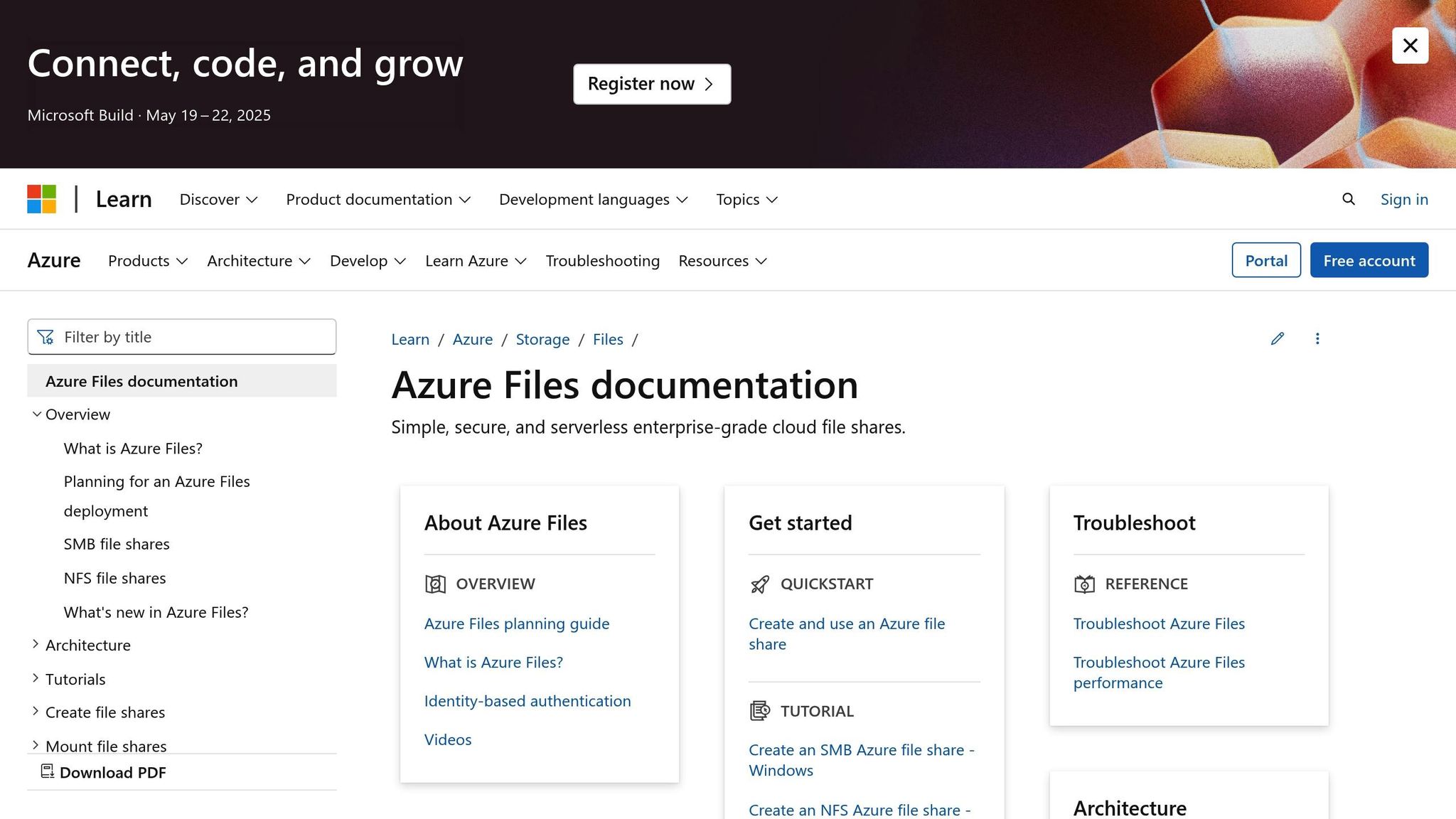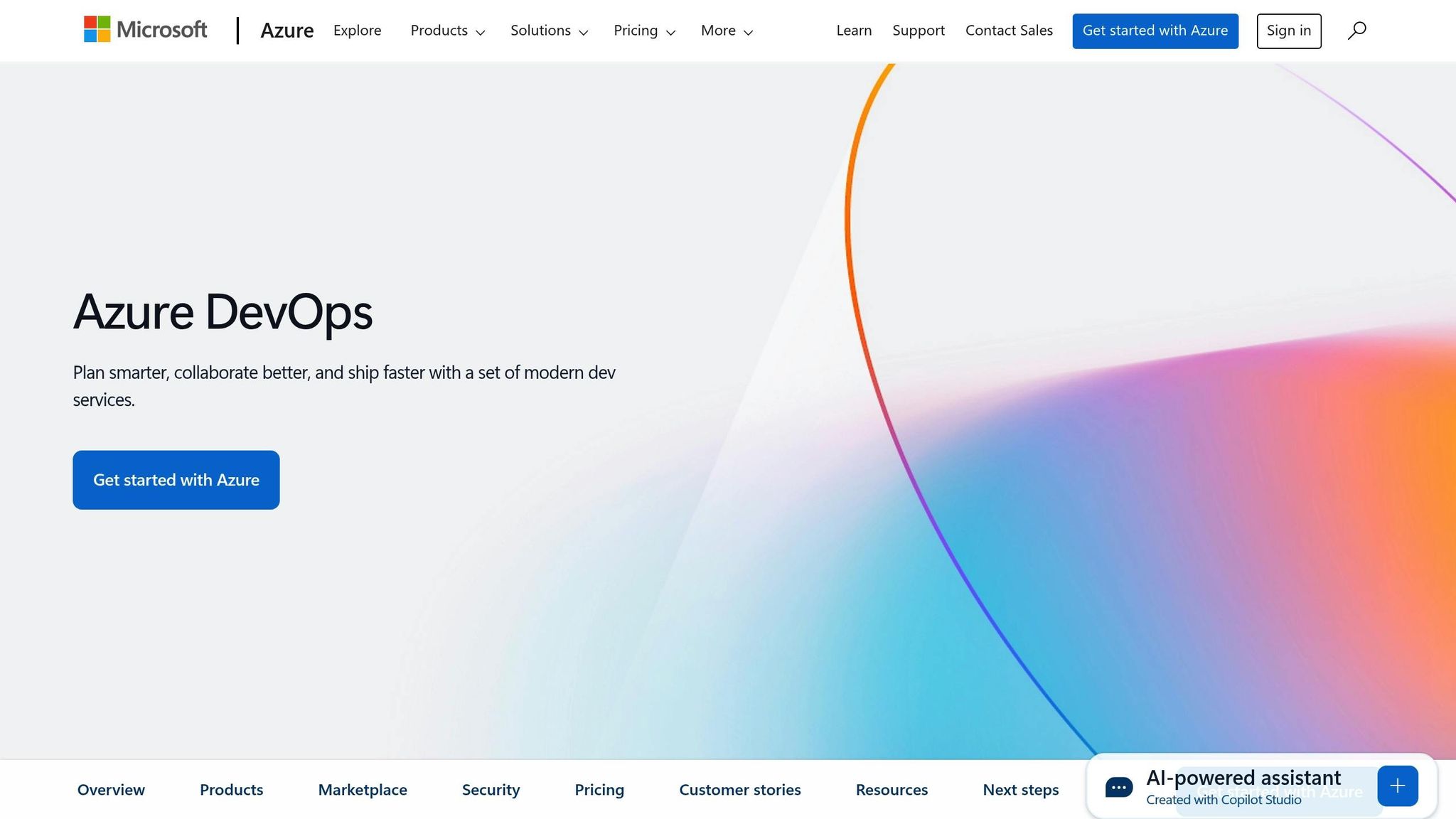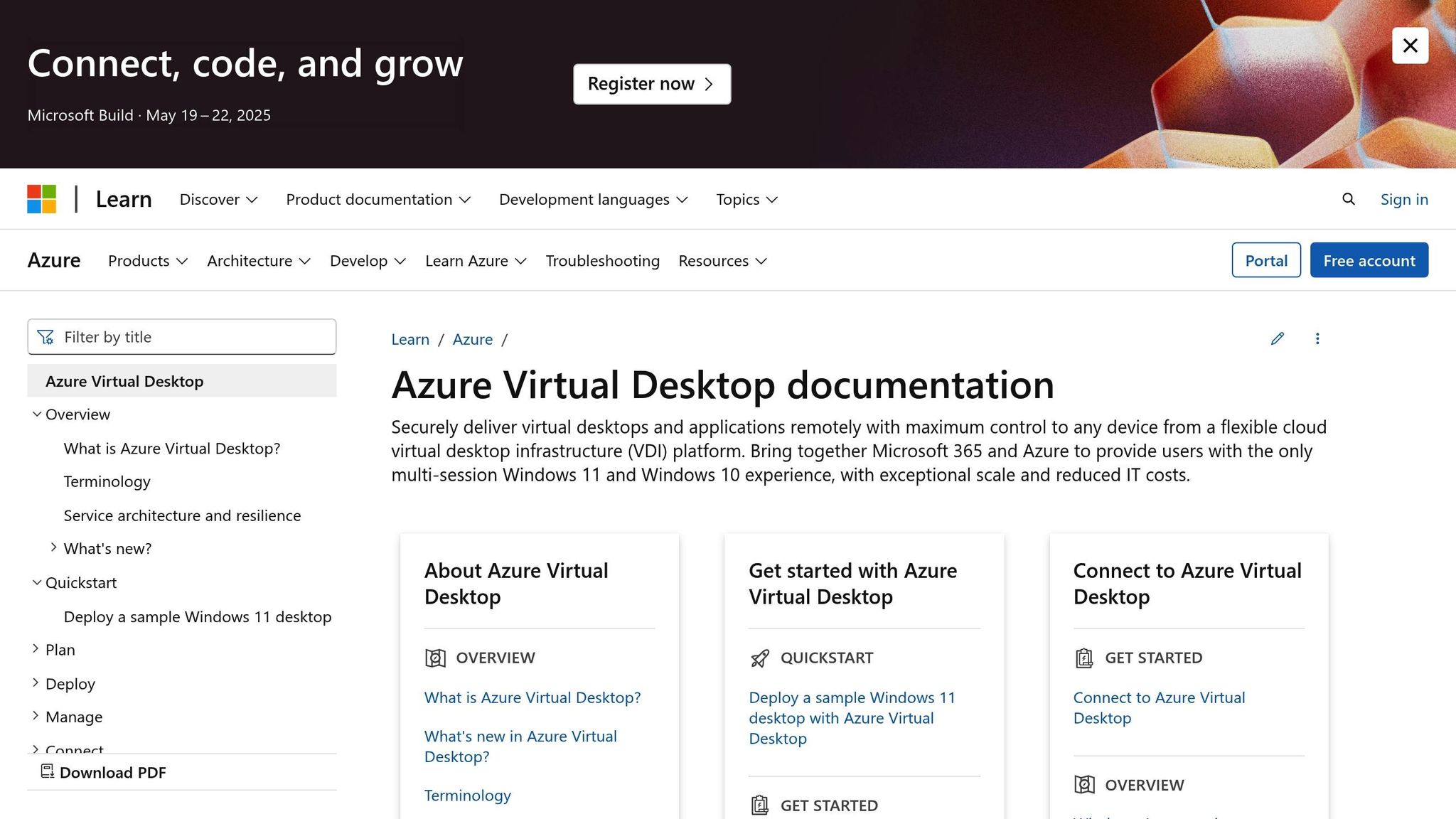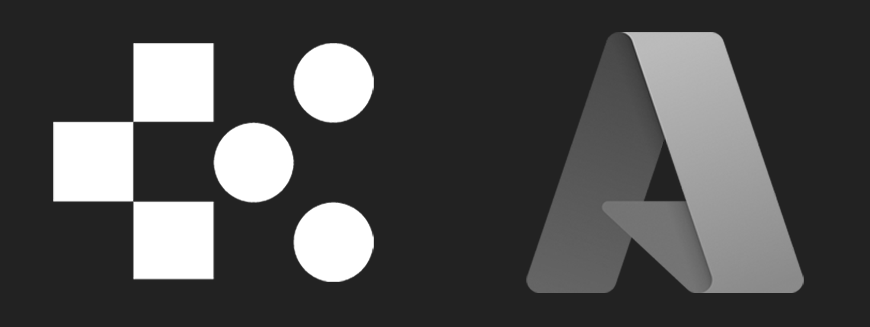Ultimate Guide to Azure Collaboration for SMBs
Explore how Azure enhances collaboration for SMBs with integrated tools, security features, and cost management strategies.

Microsoft Azure is a powerful tool for small and medium-sized businesses (SMBs) to improve teamwork and productivity. It integrates seamlessly with Microsoft 365, offers strong security, and has a pay-as-you-go pricing model starting at £3.20 per user per month. With 99.995% uptime, Azure ensures your business stays operational.
Key Takeaways:
- Collaboration Tools: Use Azure Files for secure file sharing, integrate Teams with Azure DevOps, and set up Azure Virtual Desktop for remote work.
- Security: Protect your data with Entra ID, Role-Based Access Control (RBAC), and compliance tools for GDPR and UK regulations.
- Cost Control: Optimise costs with budget tracking, tiered storage options, and autoscaling for virtual desktops.
- Setup Steps: Follow a structured migration plan, train your team, and monitor progress with Azure tools.
Quick Comparison of Azure Features:
| Feature | Purpose | Benefits |
|---|---|---|
| Azure Files | Centralised file storage | Secure, encrypted, and easy to use |
| Teams + DevOps Integration | Project management and collaboration | Streamlined workflows |
| Azure Virtual Desktop | Remote work solution | Secure access from any device |
| Entra ID | Identity and access management | Enhanced security |
| Budget Tracking Tools | Cost management | Prevent overspending |
Azure simplifies collaboration, boosts security, and keeps costs under control. Whether you’re looking to improve remote work, manage your budget, or stay compliant with regulations, this guide has everything you need to get started.
Simplify Hybrid Storage with Azure File & Sync – Step-by-Step Guide!
Azure Team Tools for SMBs
Azure offers a suite of tools designed to enhance collaboration for small and medium-sized businesses (SMBs), all while maintaining top-notch security and efficiency. Let’s dive into the key services that power team collaboration.
Azure Files: Team Storage

Azure Files provides a centralised platform for file storage and sharing, blending enterprise-grade capabilities with the familiar SMB protocol, making it intuitive for Windows users. It combines the ease of cloud storage with robust functionality.
Here are some standout features tailored for SMBs:
| Feature | Benefit |
|---|---|
| AD Domain Join | Smooth integration with existing authentication systems |
| Serverless Backup | Automated file protection without needing extra infrastructure |
| Network Isolation | Better security for sensitive information |
| SMB Channel Encryption | Safeguarded data during transmission |
| Soft Delete | Built-in file recovery to prevent accidental loss |
Azure Files ensures data is encrypted at rest using Azure Storage Service Encryption (SSE). SMBs can choose between directly mounting serverless file shares or using Azure File Sync to create local copies for faster access, depending on their specific needs.
Once storage is sorted, you can take collaboration further by integrating project management tools like Teams and Azure DevOps.
Teams + Azure DevOps Setup

Combining Microsoft Teams with Azure DevOps creates a powerful hub for project management. With the Azure Pipelines app integrated into Teams, teams can monitor development activities in real-time, all within their chat environment.
Some key commands and their uses include:
| Command | Purpose |
|---|---|
| @azure pipelines subscribe | Track specific pipeline activities |
| @azure pipelines feedback | Report issues or share suggestions |
| @azure pipelines help | Get guidance on available commands |
This integration allows team members to receive updates on builds, releases, and approvals directly in Teams, simplifying workflows and saving time.
For remote teams, Azure Virtual Desktop offers a secure and scalable way to stay connected.
Azure Virtual Desktop Setup

Azure Virtual Desktop (AVD) is an ideal solution for remote work, giving teams secure access to Windows applications and data from virtually any device. Here’s how to get started:
-
Azure AD Configuration
Set up your Azure AD tenant with global permissions, ensuring all user accounts operate under the same tenant. -
Teams Integration
Optimise media performance by enabling media redirection and installing the Remote Desktop WebRTC Redirector Service on each session host. This ensures smooth Teams communication. -
Security Implementation
Strengthen security with features like encryption (at rest and in transit), role-based access control (RBAC), multi-factor authentication, and secure OAuth tokens.
AVD provides SMBs with a centralised way to manage workflows while maintaining strong security protocols. This reduces IT complexity and boosts operational efficiency, making it a smart choice for remote teams.
Azure Security for Teams
Securing team collaboration in Azure calls for a strong focus on identity management, access control, and data protection. Here's a guide for SMBs to implement effective security measures while staying in line with UK regulations.
Entra ID Access Setup
Microsoft Entra ID acts as the first line of defence for protecting team collaboration. By leveraging its features, you can enhance security and reduce risks:
| Security Feature | How It Helps |
|---|---|
| Multifactor Authentication | Minimises the risk of unauthorised access |
| Conditional Access | Restricts access based on location or device status |
| Password Hash Sync | Guards against credential theft |
| Emergency Access | Ensures access during outages or emergencies |
Here’s how to set up a secure Entra ID environment:
- Directory Integration Use Microsoft Entra Connect to synchronise your on-premises directory with Entra ID. This ensures a unified identity framework across your organisation, simplifying management and boosting security.
- Authentication Enhancement Enable self-service password reset (SSPR) to ease the burden on IT support while maintaining security. Set up Conditional Access policies tailored to your team’s location and the sensitivity of their applications.
- Identity Protection Deploy Microsoft Entra ID Protection to monitor and respond to suspicious activities in real time. This proactive approach helps safeguard your team from potential security threats.
Once identity management is in place, the next step is to refine access permissions through RBAC.
RBAC Team Setup
Role-Based Access Control (RBAC) is essential for managing who can do what within Azure. As Microsoft Learn puts it, "Using Azure RBAC, you can segregate duties within your team and grant only the amount of access to users that they need to perform their jobs".
Here are the core components of RBAC:
| Role Type | When to Use |
|---|---|
| Built-in Roles | For standard permissions aligned with common job functions |
| Custom Roles | When specific permissions are needed beyond built-in roles |
| Group Assignments | To simplify the management of role permissions |
| Time-bound Access | For temporary elevated permissions when required |
To strike the right balance between security and collaboration:
- Limit subscription owners to three trusted administrators.
- Use Microsoft Entra Privileged Identity Management for just-in-time (JIT) access to sensitive resources.
- Assign the Azure RBAC Security Reader role to your security team for monitoring purposes.
- Conduct quarterly reviews and audits of role assignments to ensure permissions remain appropriate.
With access control under control, the next priority is ensuring your team’s data complies with UK data regulations.
UK Data Rules in Azure
For UK-based SMBs, compliance with GDPR is non-negotiable when managing team data in Azure. To support this, Azure offers several tools designed to help businesses meet UK data protection standards.
| Tool | How It Helps |
|---|---|
| Compliance Manager | Tracks and scores GDPR compliance efforts |
| Security and Compliance Centre | Detects and reports breaches within 72 hours |
| Azure Information Protection | Protects and classifies sensitive data |
| Azure Backup | Provides encrypted data recovery options |
GDPR violations can result in severe penalties, including fines of up to €20 million or 4% of annual global turnover. To avoid these risks, consider the following measures:
- Encrypt all personal data, both at rest and during transit.
- Configure tools to automatically detect and report any data breaches.
- Maintain thorough records of your data processing activities.
- Use Azure Information Protection to label and safeguard sensitive information.
Azure Cost Control for Teams
To get the most out of Azure's collaboration tools, keeping costs in check is just as important as maintaining productivity. Here's how to manage spending smartly without compromising team efficiency.
Budget Tracking Tools
Azure Cost Management offers real-time tools to help you stay on top of your budget. Here are some key features:
| Tool Feature | Purpose | Benefit |
|---|---|---|
| Budget Alerts | Sends notifications when spending nears set thresholds | Helps avoid unexpected overspending |
| Cost Analysis | Breaks down expenses by team or project | Makes resource allocation more effective |
| Anomaly Detection | Flags unusual spending patterns | Allows early issue detection |
| Cost Allocation | Tags resources by department or project | Tracks costs for specific teams |
To use these tools effectively:
- Set up alerts at 50%, 75%, and 90% of your monthly budget.
- Enable email notifications for team leaders.
- Regularly review weekly spending trends.
- Use resource tagging to monitor team-specific expenses.
"Working with Microsoft has been really powerful. Getting access to features that provide cost management and being able to interact directly with the Microsoft team has made a big difference to our ability to get to the right cost place."
Once your budget is under control, the next step is to look at cutting storage costs.
Storage Cost Reduction
Managing storage costs is another way to improve collaboration without breaking the bank. Azure's tiered storage system provides flexibility for different data needs:
| Storage Tier | Use Case | Cost Savings |
|---|---|---|
| Hot | Frequently accessed files | Standard pricing |
| Cool | Less active data | Up to 38% savings |
| Archive | Long-term retention | Up to 90% savings |
Here’s how to optimise storage costs:
- Use Data Lifecycle Management to automate file transitions between tiers.
- Keep data and applications in the same Azure region to minimise transfer costs.
- Remove unattached disks and outdated snapshots.
- Right-size storage to match actual team usage.
By implementing these strategies, small and medium-sized businesses (SMBs) can cut storage costs by up to 55%.
Now, let’s turn to managing virtual desktop expenses.
Virtual Desktop Cost Planning
Azure Virtual Desktop (AVD) can be a cost-effective solution if managed strategically. Here's a breakdown of key components and how to optimise them:
| Cost Component | Optimisation Strategy | Potential Savings |
|---|---|---|
| Session Hosts | Use autoscaling | Save up to 72% with Reserved VMs |
| User Access | Configure multi-session setups | Lower per-user costs |
| Storage | Use FSLogix profile containers | Makes resource usage more efficient |
To keep AVD costs manageable:
- Enable autoscaling to match working hours and minimise idle resources.
- Take advantage of savings plans or reserved VMs for better pricing.
- Monitor usage regularly to ensure instances are appropriately sized.
- Use resource tagging for detailed cost tracking.
Currently, external user access costs £7.85 per user for desktops and apps, with an additional Azure Local Service Fee of £7.85 per physical core per month.
Azure Team Setup Steps
Setting up Azure collaboration tools requires a thoughtful approach to ensure a seamless transition and effective use by your team.
Migration Steps
Moving team resources to Azure involves four key phases:
| Phase | Tasks | Resources |
|---|---|---|
| Assessment | Evaluate workloads and map dependencies | Azure Migrate |
| Planning | Determine resource requirements and schedule migration | Azure Solutions Partner support |
| Execution | Transfer data and migrate applications | Storage Migration Service |
| Validation | Test functionality and verify performance | Azure Monitor |
Tip: During the transition, use Azure File Sync to maintain access to existing file shares.
Once migration is complete, focus on preparing your team to effectively use Azure's collaboration tools.
Team Training Plan
Training is essential to help your team unlock the full potential of Azure's collaborative features. A structured, role-based training programme can make all the difference.
| Module | Duration | Focus Areas |
|---|---|---|
| Azure Basics | 1 week | Navigating the portal and performing common tasks |
| Security Basics | 2 weeks | Entra ID management and data protection |
| Collaboration Tools | 3 weeks | Using Microsoft Teams, Azure Files, and Virtual Desktop |
| Advanced Features | Ongoing | Role-specific tools and advanced functionalities |
By investing in tailored training, your team can integrate Azure tools into their daily workflows more effectively. After training, keep an eye on how the tools are being used and adjust as necessary to enhance productivity.
Progress Monitoring
Tracking how well your team adopts Azure is crucial. Use Azure Monitor to stay on top of key metrics:
| Metric Category | What to Monitor | Alert Conditions |
|---|---|---|
| User Activity | Login frequency and tool usage | Low engagement levels |
| Resource Usage | Storage and compute utilisation | Overuse of capacity |
| Performance | System response times and availability | Any noticeable performance drop |
| Security | Access attempts and policy violations | Unusual or suspicious activity |
Set up dashboards to visualise these metrics and configure alerts for proactive issue management. Regular reviews of these metrics can highlight areas for improvement, guide further training, and ensure your Azure setup continues to meet your team's needs effectively.
Next Steps
SMB Team Benefits
Take advantage of the strategic integration between Microsoft Teams and Azure services to unlock measurable improvements in remote work, communication, integration, and cost control. With over 90% of UK businesses relying on Microsoft Teams, its importance for both internal collaboration and customer engagement is undeniable. Here's how this synergy can translate into tangible outcomes:
| Benefit Area | Impact | Outcome |
|---|---|---|
| Remote Work | 88% enablement rate | Improved team flexibility |
| Communication | 53% dual-use rate | Better internal and external communication |
| Integration | 91% contact centre sync | Smoother customer service operations |
| Cost Control | £500 monthly ACR | Reduced Azure spending |
These results demonstrate how adopting these tools can lead to immediate, meaningful improvements. Below are some practical steps to help you get started.
Quick Team Tips
Looking to refine your Azure strategy? These actionable tips can help your team collaborate more effectively right away:
| Focus Area | Action | Expected Result |
|---|---|---|
| Storage | Use Azure Files to centralise and secure team documents | Centralised and secure document access |
| Security | Set up Entra ID with RBAC | Stronger data protection |
| Integration | Enhance project workflows | More efficient project management |
| Cost Management | Leverage Azure budget tracking tools | Smarter resource allocation and spending |
More Learning Resources
Once you've implemented these practices, you can continue to refine and optimise your setup by diving into additional resources:
| Resource Type | Purpose | Key Benefits |
|---|---|---|
| Azure Solutions Partner Path | Tailored guidance for SMBs | Easier qualification thresholds |
| Azure Optimization Tips Blog | Insights on cost and performance | Expert advice for better efficiency |
| Microsoft Official Training | Role-specific learning | Structured skill development |
| Azure Community Forums | Peer-to-peer support | Practical solutions for real-world challenges |
For more detailed advice on cost optimisation and performance tuning, check out the "Azure Optimization Tips, Costs & Best Practices" blog at https://azure.criticalcloud.ai. It’s packed with practical insights tailored specifically for SMBs scaling their operations on Microsoft Azure.
FAQs
How can Microsoft Azure help small and medium-sized businesses improve remote collaboration?
Microsoft Azure brings a variety of tools and services aimed at helping small and medium-sized businesses (SMBs) improve remote collaboration. With Azure Virtual Desktop, teams can securely access their work environments from virtually anywhere, maintaining smooth workflows no matter where they are. On top of that, Azure seamlessly integrates with Microsoft Teams and SharePoint, making real-time communication, file sharing, and project management more efficient.
Security is another area where Azure stands out. It offers features like data encryption and identity management to safeguard sensitive business information, even in remote working setups. And for SMBs planning to grow, Azure’s flexible approach lets you tailor solutions to match your specific collaboration needs - keeping costs manageable while delivering reliable performance.
What security features does Azure provide to help UK businesses comply with data protection regulations?
Azure comes equipped with a variety of security features aimed at helping UK businesses meet data protection laws, including the UK GDPR and the Data Protection Act 2018. These features include built-in encryption for both data at rest and in transit, advanced threat detection capabilities, and compliance certifications tailored to meet UK legal requirements.
To further support organisations, Azure offers tools like Azure Policy and Azure Security Centre. These tools enable businesses to monitor compliance, enforce security measures, and identify potential vulnerabilities effectively. Plus, with Microsoft's data centres located in the UK, companies can ensure that sensitive information stays within the country, meeting data sovereignty needs.
What are the best ways for SMBs to manage Azure costs without compromising productivity?
SMBs looking to manage and cut down on Azure costs can benefit from focusing on smart cost management strategies tailored to their specific needs. This means actively keeping an eye on resource usage, adjusting service scales to match demand, and choosing between reserved instances or pay-as-you-go pricing models to avoid spending more than necessary.
On top of that, following cloud architecture and security best practices can boost operational efficiency while keeping expenses in check. Regularly reviewing your Azure setup helps prevent over-provisioning and ensures you're striking the right balance between performance and cost. By taking these steps, SMBs can grow their operations without stretching their budgets too thin.




